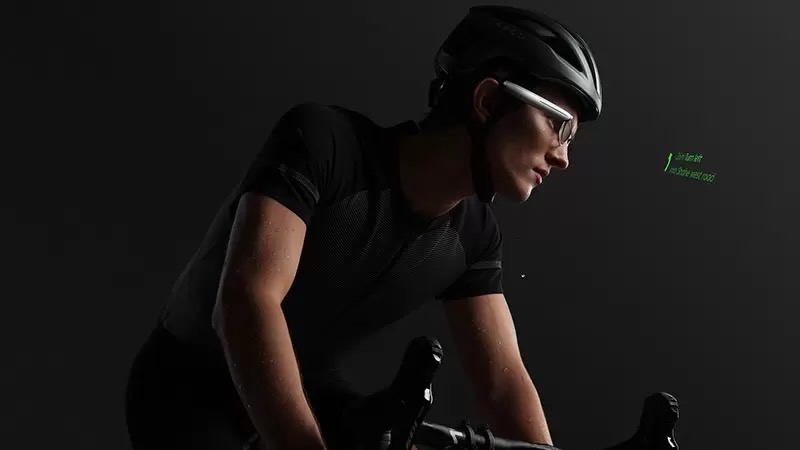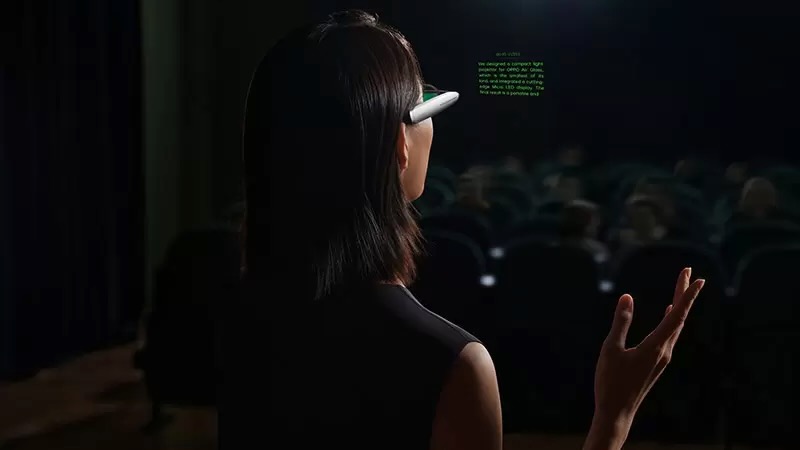OPPO's Air Glass gives a glimpse at what Google AR hopes to achieve
At AWE, I had a chance to test live voice translation transposed on smart glasses, well before Google's glasses go live.

This week's Augmented World Expo showed off plenty of early-adopter tech that's technically "on sale" but is really meant as a proof of concept that'll improve with every generation. Over $1,000 VR and AR rigs that look like motherships or your grandparents' thickest glasses on steroids; haptic vests that hurt you when you're hit in-game; 3D or holographic displays meant to replace traditional monitors; and AR sunglasses that display your workout info like pace and time as you run.
Once the AWE show doors opened, I headed straight to the OPPO booth. The Chinese Android brand announced last week it would show off its AR tech in North America for the first time, and I was intrigued. For starters, its augmented reality tech only works with OPPO phones and the OPPO smartwatch, which don't sell here; could that signal OPPO's plans to expand to the U.S.? Plus, I wanted to see what a "consumer-ready" smart glass device was like, since OPPO Air Glass went on sale in China this year.
On the first point, the friendly OPPO reps quickly quashed my conspiracy theorizing, explaining that the company simply wanted to start growing awareness of its products with the U.S. tech media and the XR community, with no immediate plans for expansion.
But my second point stood, because OPPO actually managed to release a relatively affordable AR device at 5,000 yuan (~$750) — about $250 cheaper than Google Glass 2, $650 cheaper than the Lenovo ThinkReality A3, and thousands less than Hololens 2.
Apple, Meta, Google and other brands are hard at work developing mixed-reality (XR) tech with passthrough, meaning they capture your surroundings with cameras and project it inside a closed VR headset with holographic augmentations on the world. Project Iris, Project Cambria, and Apple AR/VR are all expected in the next couple of years.
But we've yet to see proper smart glasses at a consumer-ready price. I was curious if OPPO had pulled it off.

Air Glass is a 1oz magnetically attached smart monocle with assisted reality (aR) tech, meaning it displays text in your vision but lacks the holographic capabilities of "true" augmented reality glasses. It's like Google Glass, in other words. Your vision is largely unimpaired, except that the compact Spark Micro Projector displays widgets like the weather, your calendar, live translation, or navigation directions in a small portion of your vision.
Get the latest news from Android Central, your trusted companion in the world of Android
It runs off of Snapdragon Wear 4100, the same chip found in many Wear OS watches, and has 1,400 nits of brightness, making text appear bright and crisp in your vision.
Swapping between widgets is simple. You simply slide your finger along the touch interface on the monocle's temple, back and forth to swap widgets or up and down to cycle through info on that widget. I'd compare it to Ray-Ban Stories, which lets you tap along the edge to take photos or control music playback.

One feature highlight is Translation; the Air Glass' mic picks up English or Mandarin speech and transcribes the translation in your field of view. Mandarin-to-Japanese and Mandarin-to-Korean will also be available soon. I found it took a few seconds for the translation to appear, but that could be thanks to the crowded net traffic in the convention center.
Otherwise, it seems like a supremely useful feature if you frequently travel for work. As do other tools like the Navigation UI transposed on your vision as you drive or the Teleprompter for reading a speech on stage.
Perhaps my only issue is that I couldn't always find the sweet spot where the text appeared clearly, making me feel like my eyes were straining or cross-eyed seeing text in just half of my vision. But frankly, most of the AR glasses I tried this week had similar issues even with two lenses, due to limited FOV. So I don't hold it against OPPO as much as I do the medium itself.

Google recently showed off Live Translate AR glasses at Google I/O 2022, likely built off of the Focals by North AR brand Google acquired in 2020. Its Live Translate tool for the Pixel 6 series works offline with English, French, German, Italian, and Japanese, while Google Translate generally works with hundreds of languages.
We don't know yet when Google will release these glasses or what other features they'll support besides translation. But it's feasible OPPO will have had plenty of time to improve its hardware and software before Google officially enters the picture, while Google has the advantage of its respected language algorithms.
On that note, even if OPPO has no immediate plans for entering the North American market, it does sell rebranded Oppo phones here via the OnePlus brand. In theory, it could begin to sell Air Glass or future models now that the two phone brands share a ColorOS software base. That would, in theory, make OPPO Air Glass a rival to whatever Google calls its AR glasses.
At the moment, I'm not sure I'd buy OPPO Air Glass or Google's hypothetical Glass successor. Both are essentially smartphone accessories, with a combination of immersive notifications and niche software you'd typically find on a typical Android smartwatch — except Air Glass costs twice as much as one, and I'll be shocked if Google AR is that much cheaper.

OPPO also showed off its older AR Glass prototype, which isn't for sale but has more advanced AR experiences and games. Tethered to your OPPO phone for power, AR Glass was capable of much better visuals and more powerful experiences, like a cute tower defense game and live translations of fake traffic signs to English.
We've tried consumer AR glasses before like Nreal Light that recreate your phone's UI in the world around you, with mixed success. Devices like it and OPPO AR Glass don't have much "real-world" use but have more enjoyable gaming applications and more pleasing visuals that make them more likely to grab the attention of techies with disposable income.

OPPO is currently partnered with Qualcomm as part of Snapdragon Spaces, an open mixed-reality platform that launched at AWE USA 2022. Qualcomm recently launched its own AR glasses prototype that hardware developers like OPPO can copy and revamp as they choose.
So I expect we'll see more augmented or assisted reality hardware from OPPO in the future, and based on its demos, I'm intrigued to see what they do next. Even if I've yet to try any AR glasses that feel quite as essential or immersive as VR tech does, OPPO was one of the first Android brands to take a shot at an unproven medium. It makes me intrigued to see what else they'll bring to the table in the future.

Michael is Android Central's resident expert on wearables and fitness. Before joining Android Central, he freelanced for years at Techradar, Wareable, Windows Central, and Digital Trends. Channeling his love of running, he established himself as an expert on fitness watches, testing and reviewing models from Garmin, Fitbit, Samsung, Apple, COROS, Polar, Amazfit, Suunto, and more.
